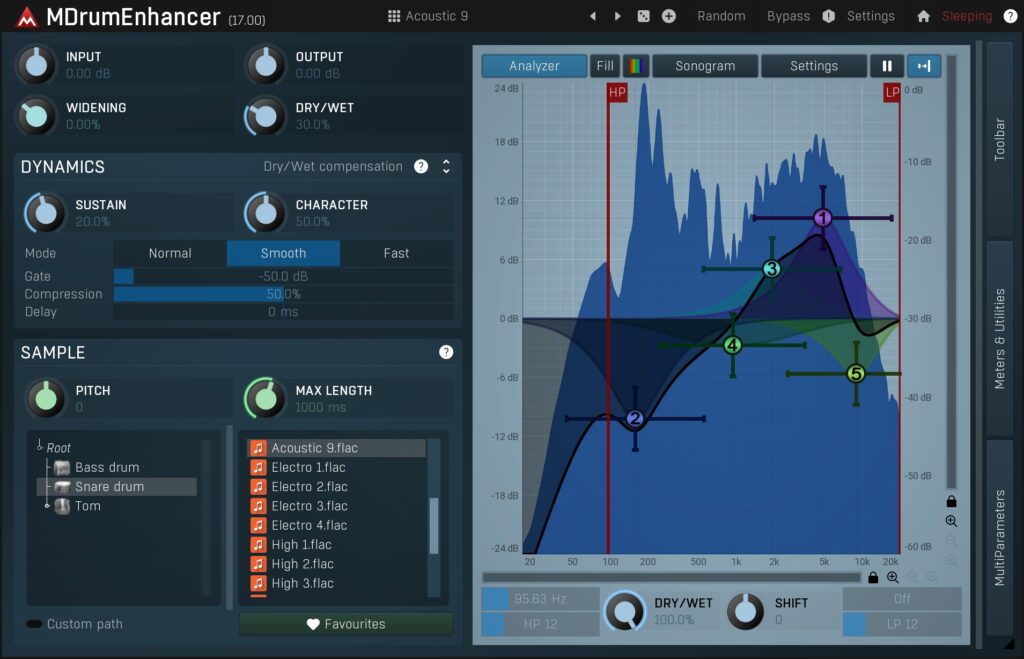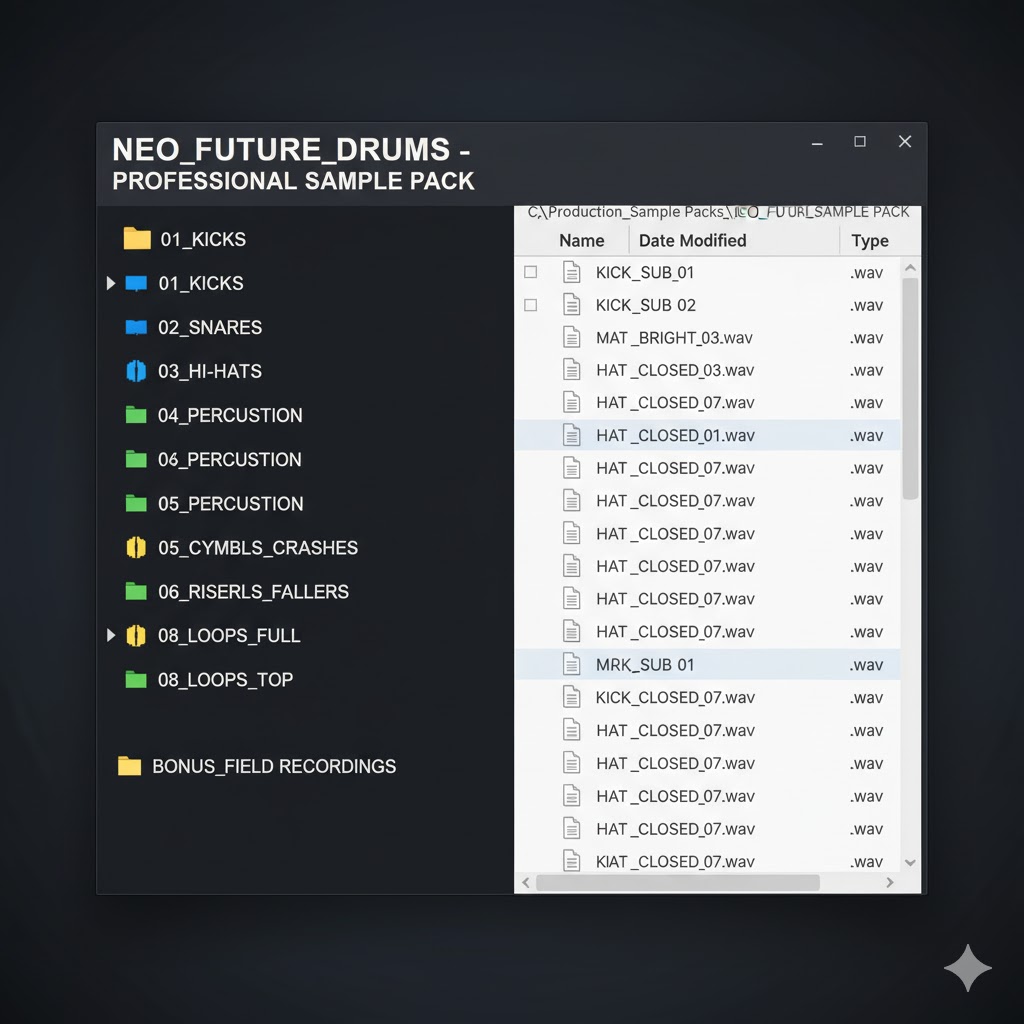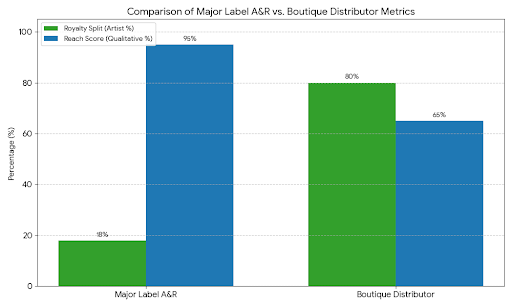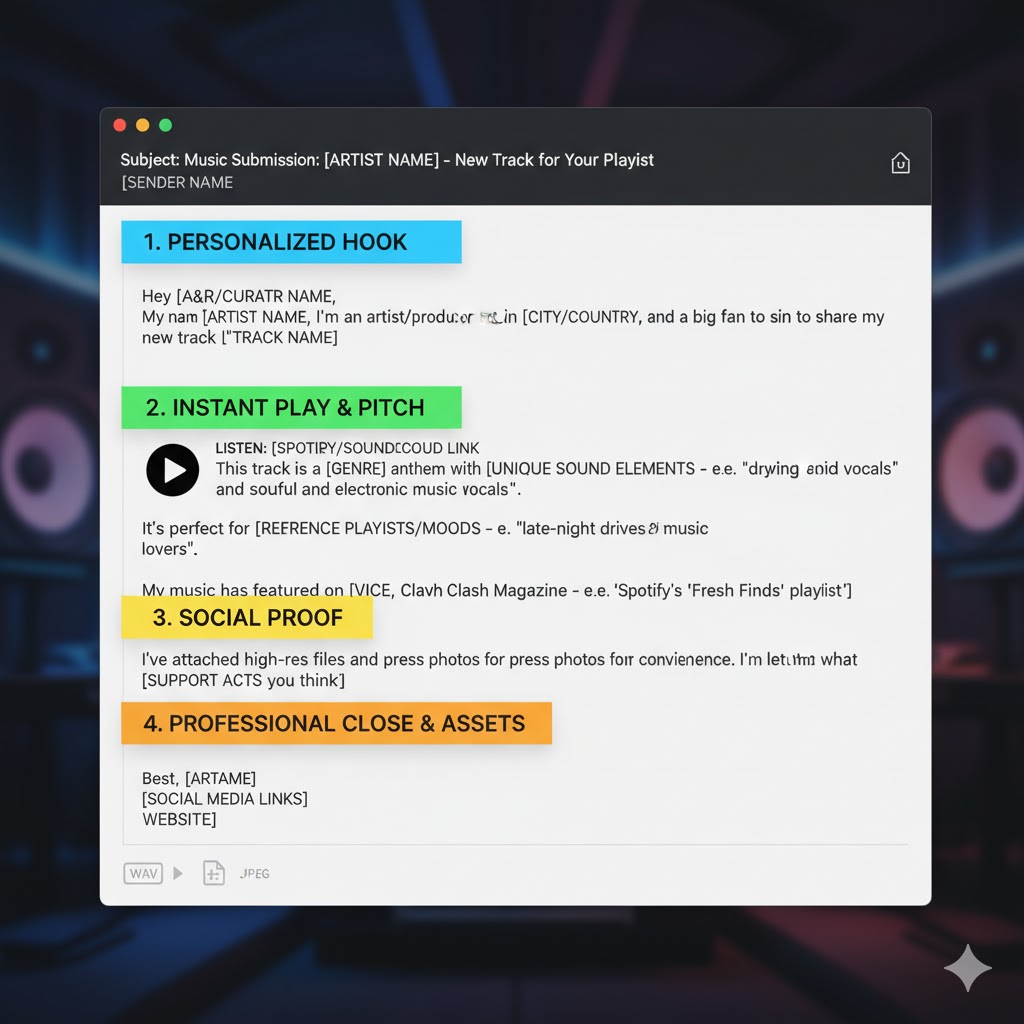
The music industry is a $1.5 billion giant, and the demand for high-quality, pre-cleared sounds—especially drum samples—is insatiable. Every modern producer from bedroom beatmakers to chart-topping veterans relies on these foundational elements. Yet, the process to pitch drum samples from your hard drive to a lucrative licensing deal feels like navigating a secret society. Most creators fail, not because their sounds are bad, but because their strategy is nonexistent. They simply email a folder, cross their fingers, and wait for a reply that never comes.
This is the ultimate, advanced guide designed by industry professionals to move you past the amateur mistakes. We’ll break down the process into an actionable, 10-step strategic framework. By the end, you’ll know how to structure your sample pack, identify the right high-value targets, craft an unforgettable pitch, and negotiate the licensing agreements that ensure your creative work is properly paid for. It’s time to stop waiting and start selling.
Phase I: Mastering the Product & Strategy
1. The Ultimate Pre-Flight Check: Before You Pitch Drum Samples
You wouldn’t send a pilot off without a checklist, and you certainly shouldn’t pitch drum samples without a professional audit. The quality and legality of your pack are non-negotiable foundations for securing a licensing deal. An A&R or distributor will immediately discard a pack that requires them to do extra work.
LSI: Legal Clearance and Licensing Basics
The biggest mistake is assuming “royalty-free” is a universal protection. You must understand music publishing and licensing (Music Licensing Authority) at a fundamental level. If you used any source material, be it a public domain sound effect, a tiny micro-sample from an old record, or even a unique digital effect, you must have an iron-clad paper trail proving the sound is 100% clear. Unclear samples are a massive legal liability, and reputable distributors will not touch them.
The Sound Quality Standard
Your sound quality must meet the professional, release-ready fidelity of commercially available packs. This means zero clipping, professional transient shaping, and an optimal loudness level. Reference your work against successful, premium sample packs. If your sounds are thin, poorly mixed, or require heavy processing just to be usable, you’ve failed the pre-flight check. Focus on crafting high-quality, production-ready drum loops that save the end-user time (high-quality, production-ready drum loops).

Market Research: Finding Your Niche
The market is saturated with “808 Kits” and “Trap Drums.” To stand out, you need a niche. Are you focused on rare 1970s Polish Disco drum breaks? Minimal, hydro-acoustic percussion? Identifying a gap in sample pack distribution or a highly specific, underserved sonic aesthetic dramatically increases your pitch’s appeal.
The “Product” Presentation
The aesthetic of your pack is almost as important as the sound. Professional artwork, a clear, evocative name, and comprehensive metadata (BPM, key, genre) elevate your samples from a folder of files to a desirable, branded product.
2. Structuring Your Sample Pack for Maximum Value
A brilliant sound collection is useless if the producer can’t find the right sound at the right time. Your pack structure is a direct reflection of your professionalism.

Folder Hierarchy and Organization
Adopt the industry standard: clearly label folders by sound type (Kicks, Snares, Hats) and, where appropriate, sub-categorize by style (Clean Kicks, Lo-Fi Snares). Ensure all files are numbered sequentially and consistently.
READ ALSO HOW TO CREATE A SELLING SAMPLE PACK
Bonus Content and Tiers
To justify a premium price point, consider including unique bonus content. This could be MIDI loops, exclusive synth presets, or even a short, genre-specific production tutorial. This added value makes the distributor’s marketing job easier.
Tempo and Key Tagging
This step is critical for easy licensing drum loops. Every loop and melodic sample must be correctly tagged with its tempo (BPM) and key. Use professional tagging software to embed this metadata, making the files instantly searchable in a user’s DAW or library.
The Perfect Demo Track
The demo track is your ultimate marketing asset. It should showcase the full range of sounds—from the hardest hitting to the most subtle—in a professionally mixed and mastered piece of music. Avoid simply playing the samples individually; demonstrate the power of the kit in context. If you’re still in the creation phase, check out the definitive guide to sample pack creation.
Phase II: The Strategic Outreach
3. Identifying High-Value Targets for Sample Pack Submission
Your goal is to be placed on platforms or labels that value quality and can command a high price point. A scattershot email approach is a recipe for rejection.
Major Label A&R vs. Boutique Distributor
Major distributors like Splice or Loopmasters offer massive reach but often have high submission volumes and lower royalty splits. Boutique distributors offer higher splits, personalized relationships, and a more curated catalog. Decide where to submit drum samples to labels and distributors based on your goals.

Analyzing Target Catalogs
Before sending an email, spend hours dissecting the target’s existing catalog. Does your pack sound exactly like something they already have? If so, you’re a competitor, not a collaborator. If your pack fills a sonic gap they have, your pitch is instantly stronger.
Building a Targeted Outreach List
Look beyond the generic “info@” email. Use LinkedIn, music industry directories, and platform credits to find the specific A&R, Head of Content, or Product Manager responsible for sound packs. A direct pitch to the decision-maker is far more effective.
The Distributor vs. Self-Publishing Matrix
While this guide focuses on pitching to third parties, don’t discount the power of selling directly. Using your own e-commerce platform gives you 100% of the profits, though it demands more of your own drum kit marketing efforts.
4. How to Craft the Unforgettable Drum Sample Pitch Email
The pitch is your one shot. A poorly written email is a spam filter casualty. A great one is a ticket to a deal. The key is extreme brevity and an immediate value proposition.
The Subject Line Secret
Avoid clichés like “Check out my new pack!” Instead, focus on utility and exclusivity: “Exclusive: Hard-to-Find 70s Analog Drum Breaks – [Your Name]” or “Filling Your [Genre] Gap: 50 Custom Kicks for Q3.”

The “Hook & Proof” Body Formula
The first three sentences must deliver the “Hook” (what the pack is and why it’s unique) and the “Proof” (a single, powerful link to a professional demo or a testimonial). The body should be no more than two short paragraphs. Do not attach large files to the email; use a clean, professional download link.
Attachment & Link Strategy
Host your demo track and a lightweight PDF pitch deck on a secure, private cloud link (like Dropbox or Google Drive). Ensure download permission is set up correctly. A public, professional-looking landing page is even better, as it shows you are serious about selling. This professionalism helps you successfully pitch drum samples and build trust.
Follow-Up Tactics
Follow up exactly one week later with a single, polite sentence. “Just checking this email made it to the top of your inbox.” After two weeks, if there’s still no reply, move on. Persistence is key, but so is respect for their time.
5. Negotiating the Win: Licensing and Sales Agreements
A successful pitch leads to a contract. Do not sign the first thing they send. Understanding the terms is crucial for ensuring you know how to sell drum samples profitably.
Understanding Royalty Splits and Exclusivity
Royalty splits can range from 30% to 70% in your favor, depending on exclusivity. Exclusive deals (where you can only sell the pack through one distributor) often net a higher percentage but restrict your income streams. Non-exclusive deals allow you to sell elsewhere but may offer a lower split.

Setting Your Price Point
Research the competition. If your pack is highly niche and premium quality, don’t undersell it. While the distributor sets the final retail price, you should be aware of the average price and have a justification for a higher price point based on the value you offer. Consider the $1.5 billion size of the global music library market (Statista) and aim for a fair piece of that pie.
The Negotiation Mindset
Be prepared to negotiate two things: the royalty split and the duration of the contract. Hold firm on quality control: ensure they cannot alter your product name, description, or artwork without your consent.
Common Legal Pitfalls to Avoid
Ensure the contract explicitly states the usage rights for the end-user (usually “Royalty-Free”). Look out for clauses that allow the distributor to take ownership of your individual sounds. You are licensing the pack, not selling the copyright to your work.
Phase III: Advanced Marketing & Scaling
6. Leveraging Influencers for Explosive Drum Kit Marketing
Even the best-placed packs need promotional fuel. The goal of drum kit marketing is to make the end-user believe this pack is essential for their music production workflow.
Finding the Right YouTubers and Producers
Target influencers whose content aligns perfectly with your pack’s genre. An electronic producer with 10k engaged, relevant subscribers is infinitely better than a gaming influencer with 1 million irrelevant followers. Authenticity is everything.
The Endorsement Deal
Offer influencers a steep discount or a free copy for a dedicated review or inclusion in a beat-making video. If you can, offer an affiliate code to incentivize them further, giving them a small commission on sales they drive.
Creating Irresistible Promo Codes and Affiliate Links
Work with your distributor to create a unique BangerLaunch promo code or link for your own marketing. Share this only on your channels or with specific partners. You can check out successful afro-house and afrobeats sample releases for inspiration on product bundling.
Building Your Own Brand as a Sound Designer
In the long term, the best sales channel is your own reputation. The importance of producer testimonials (MusicRadar) and continuous high-quality releases cements your name as a trusted source of sounds.
7. The Simple Guide to Mastering Drum Sample Clearance
This is the make-or-break section for professional licensing. If you have not generated the sound 100% yourself, you need legal documentation.
The Difference Between Original and Derivative Works
An original work is created entirely by you. A derivative work is based on or uses elements of one or more pre-existing works. Understanding this distinction is key for clearing all sounds. Always refer to official guidelines for derivative works (US Copyright Office) if in doubt.
Micro-Sample Clearance
Even a fraction of a second of a non-original sound can be litigious. If you pitch a pack with uncleared samples, your name will be blacklisted by major distributors. Use only sounds you have recorded or synthesized, or sounds explicitly verified as being in the public domain.
Documentation Checklist
Maintain a spreadsheet documenting the origin of every single sound in your pack. Include:
- Original source (e.g., recorded on a Zoom H4n)
- Date of recording/creation
- Clearance status (e.g., “100% Original” or “Licensed via XYZ library”)
Why Clearance is Non-Negotiable
It protects you, the distributor, and the end-user from expensive copyright infringement lawsuits. It is the fundamental ethical and legal requirement of the music library business.
8. Automating Distribution and Maximizing Revenue Streams
Once you secure your first deal to pitch drum samples, the work shifts to maximizing passive income.
Digital Distribution Platforms
Whether you choose a distributor or decide to sell directly, you need a platform. Explore the best places to sell independently and popular sample pack distribution platforms to host your finished product. These tools automate the delivery and sales tracking.
Building an E-Commerce Funnel
If self-publishing, build a dedicated landing page for your pack. Use email marketing to drive traffic, offering a free, smaller sample pack as a lead magnet to build your list.
Bundling and Limited-Time Offers
Create urgency. Offer the pack at a lower price for the first month, or bundle it with a previous pack to increase the average order value.
Tracking Sales and Analytics
Pay close attention to distributor reports. Which sounds are people using most? Which pack sold best? This data is invaluable for creating your next successful pack and refining your future pitch drum samples strategy.

Conclusion: Your Next Step to Professional Sound Design
Mastering how to pitch drum samples is a skill that separates the amateur hobbyist from the professional sound designer. It requires a flawless product, a strategic outreach plan, and a savvy understanding of licensing and marketing. You now have the advanced secrets—from pre-flight checks and clearance documentation to crafting the perfect email pitch and negotiating royalties. The market is ready for your unique sound. The only question left is: Are you ready to pitch?
ACTION STEP: Use the “Pre-Flight Check” checklist (Section 1) today to audit your current sample pack.
FAQ Section
Q1: What is the average royalty split when you pitch drum samples?
The average royalty split for non-exclusive sample packs typically ranges from 30% to 50% in favor of the creator, depending on the platform. Exclusive deals can push the creator’s split higher, sometimes up to 70%, in exchange for selling only through that one distributor.
Q2: How long should my pitch email be?
A pitch email should be extremely concise—no more than two short paragraphs (under 100 words total). The goal is to get the recipient to click your demo link, not read a novel. Brevity shows respect for their time.
Q3: What is LSI and why are LSI keywords important for sample pack submission?
LSI stands for Latent Semantic Indexing. LSI keywords are related terms (e.g., “sample pack distribution” or “how to sell drum samples”) that Google uses to understand the full context of your article. They ensure your content is comprehensive and covers the entire topic landscape.
Q4: Should I offer my drum samples for free first to build an audience?
Offering a small, curated selection of your best sounds for free (a “taster pack”) in exchange for an email address is an excellent lead generation strategy. However, do not give away the entire, premium product you plan to pitch drum samples to distributors.
Q5: What is the most common reason a pitch is rejected?
The most common reason for rejection is poor quality control, often relating to either sound quality (not professionally mastered) or legal issues (unclear licensing and lack of clearance documentation).
Q6: Can I use drum sounds from classic records if they are heavily processed?
You should assume NO. The legal doctrine of “de minimis” (too small to matter) is not a safe defense. If the original sound is identifiable, even after processing, you risk copyright infringement. Only use sounds you have created or sounds with documented, explicit royalty-free or public domain status.
Q7: What is the best format for my drum samples?
The industry standard is 44.1 kHz, 24-bit WAV format. WAV is uncompressed and universally compatible. Always avoid compressed formats like MP3 for your final product.
